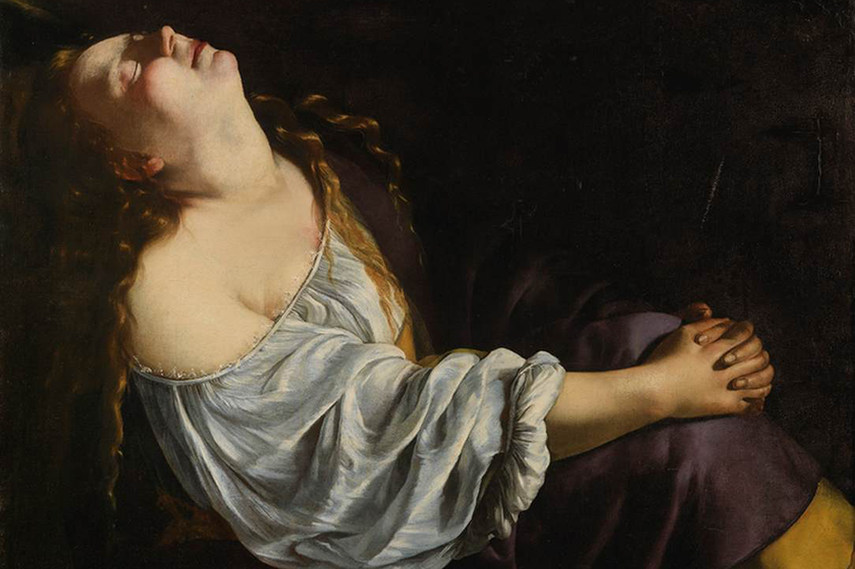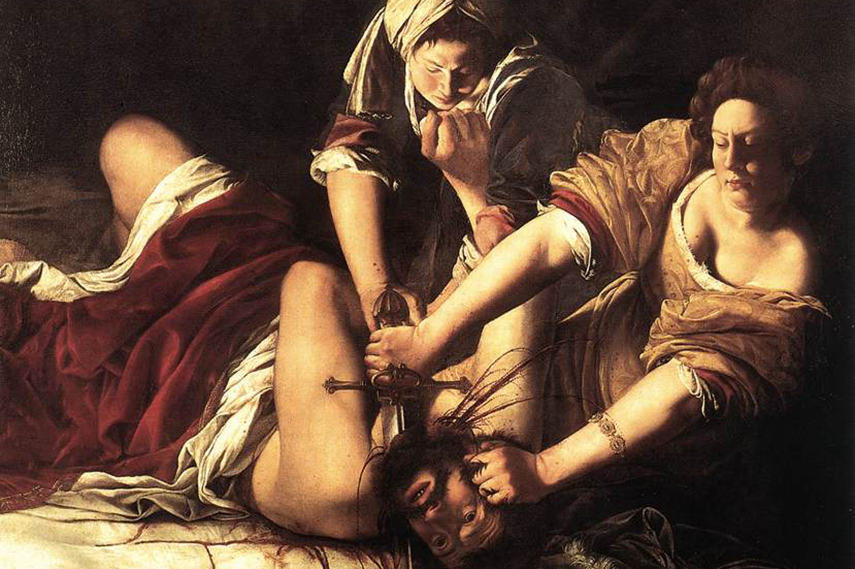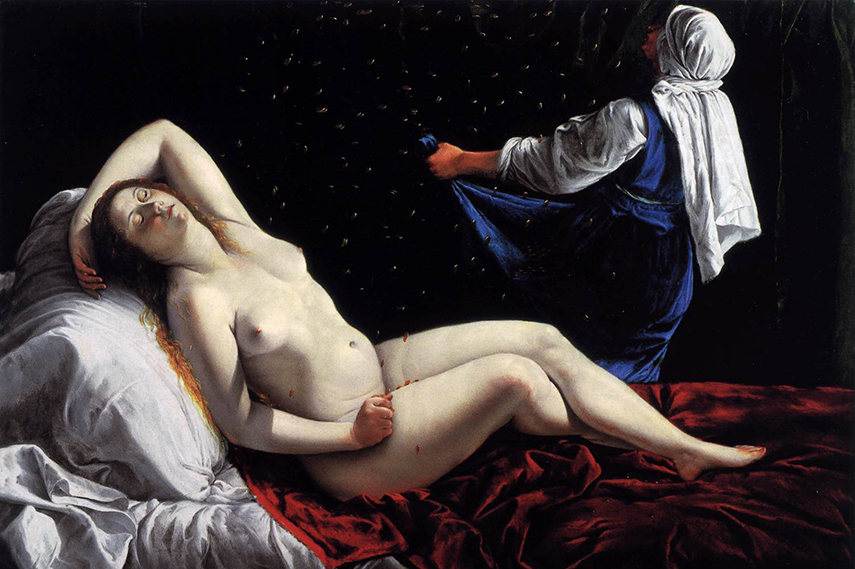Artemisia Gentileschi - From Facts and Fiction to Feminist Inspiration
Artemisia Gentileschi is probably one of the most famous female painters from the 17th century and perhaps one of the most celebrated painters of the generation after Caravaggio.
This Italian painter is one of the first female artists to gain recognition in the Baroque era and she is definitely the most discussed figures from the 17th century today, not only because of her artistic accomplishments but also for controversies which followed her life. She was definitely one of those artists ahead of her time and her work and biography were featured in many recent publications, although it is sometimes difficult to make a distinction between facts about Artemisia Gentileschi and those fictional elements and mythical narratives woven around her personality.
She was one of the first female artists to stand up for women’s rights and to pave the way for future feminist authors. In the following paragraphs, we bring you the art and life of Artemisia Gentileschi, from facts to fiction and early roots of feminism.

Biography and Controversy
Artemisia Gentileschi was born in Rome in the last decade of the 16th century. She was the daughter of a notable painter Orazio Gentileschi, highly influenced by the Caravaggio painting style which became the dominant in the Artemisia’s work as well, in her highly naturalistic portrayal of figures, dramatic scenes and the use of chiaroscuro technique.
She was the first woman painter who became a member of the Accademia di Arte del Disegno in Florence and it was a major success at that time when art studies were inaccessible to women. With her highly distinguishable style, she quickly gained praise among her contemporaries but throughout the history her artistic achievements were usually overshadowed by her rape trauma and the prosecution which followed.
In those centuries after her death, she became a feminist legend. Her success as a woman painter, and early women empowerment tendencies in her works, were often emphasized more than the artistic quality and aesthetic value of her paintings.

The Art of Artemisia Gentileschi
When it comes to the artistry of Artemisia Gentileschi, the first associations are those strong women protagonists often inspired by the characters from the Bible. In the patriarchal society with male-dominated values, women portrayed by Gentileschi appeared as unorthodox, transgressing the stereotypes of gender roles.
Often violent scenes depicted by Gentileschi feature strong, vigorous women, warriors or victims, but never delicate, idealized, sensual figures. Her empowered female protagonists, familiar to blood and violence, are often interpreted, like her oeuvre in whole, as a revenge for the rape and traumatic experience she survived.
Agostino Tassi, the man responsible for the sexual assault was a colleague of her father Orazio and the tutor of Artemisia. Tassi was imprisoned twice for similar crimes, before he was prosecuted by Artemisia’s father.
This incident later became the crucial point of view when it comes to the understanding of Gentileschi’s artworks and it also initiated the feminist view of her artistic practice.

Capital Works of Artemisia Gentileschi
Gentileschi’s forty-year-long career can be divided into several important periods from the early works in her father’s workshop to those done in England before the civil war.
Revolutionary and rebellious in the beginning, her practice during the second part of her career was mostly described as more “feminine” and sensual and therefore not so exciting for those who were searching for the manifestation of the artist's personal disquieting experiences in the paintings.
Early works to Venice Period
One of the most recognizable early works of Gentileschi is Judith Beheading Holofernes, a painting which depicts decapitation of the Assyrian general, scene found in one of the apocryphal books of the Old Testament. This piece is often compared to the one of Caravaggio, especially in the portrayal of Judith.
Although we know that Gentileschi was influenced by Caravaggio’s style, the female figures of Artemisia are the embodiment of empowered womanhood in the role of agency, rather than being passive observers like in Caravaggio’s version of the same scene. Other famous paintings from this period are Judith and her Maidservant, The Sleeping Venus and the series of self-portraits.
Naples to English Period
During the second part of her career, her works became more graceful and self-conscious. This change of style is explained by many theorists as the result of Artemisia’s recognition in the art circles and not being forced to compete with her male peers.
It came as a period of maturity and most famous paintings from this period are her Virgin and Child with a Rosary and Susanna and the elders.

Artemisia Gentileschi Facts and Fiction
Until the last couple of decades, Artemisia Gentileschi was seen as a curiosity rather than anything else. Her life, including rape trauma, trial, and forced marriage came to be the often explored themes in many fictional and non-fictional works. One of the bestselling novels about the Italian painter was Susan Vreeland’s The Passion of Artemisia and it was a work of historical fiction which presented many intriguing facts about Artemisia’s life.
What you may found interesting is that she was a friend of Galileo Galilei as they both had connections to the Grand Ducal Court in Florence and were members of the Accademia del Disegno.
Another interesting fact is that, before the rediscovery of her oeuvre at the beginning of the 20th century, many of her paintings were attributed to her father, and her famous painting Judith Slaying Holofernes was in possession of Cosimo II di’ Medici who hid it from view because he found it horrifying.
Although Artemisia's art was neglected and forgotten after her death and two centuries had to pass before the rediscovery of her oeuvre, the historical and artistic significance of Artemisia Gentileschi cannot be denied. After all, she was one of the leading painters of her time, confident and self-conscious about her personal life and her artistry.
But it isn’t until recently that she became one of the most important feminist role-models, person portrayed in many popular works of novelists and filmmakers, and recognized outside the closed circles of scholars and art historians.
Editors’ Tip: Artemisia Gentileschi
Artemisia Gentileschi, widely regarded as the most important woman artist before the modern period, was a major Italian Baroque painter of the seventeenth century and the only woman follower of Caravaggio. This first full-length study of her life and work shows that her powerfully original treatments of mythic-heroic women subjects depart radically from traditional interpretations of the same themes.
Featured images: Artemisia Gentileschi - Self-Portrait as the Allegory of Painting, 1630s. Oil on canvas, 96,5 x 73,7 cm - Royal Collection, Windsor - detail; Judith Beheading Holofernes, 1612-21. Oil on canvas, 199 x 162 cm - Galleria degli Uffizi, Florence - detail. All images retrieved from the Web Gallery of Art
Can We Help?
Have a question or a technical issue? Want to learn more about our services to art dealers? Let us know and you'll hear from us within the next 24 hours.

